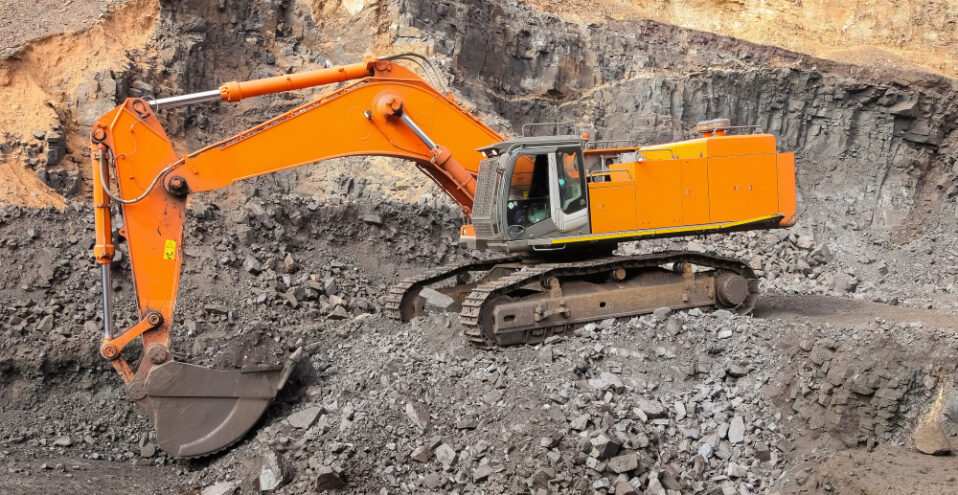Understanding the Online Mining Cadastre- Mining Act 2016
In fulfilling its mandate under the Mining Act 2016 (“the Act”), the Ministry of Mining (currently Ministry of Petroleum and Mining) created an electronic platform for all stakeholders in the mining sector in Kenya to promote online transactions and enhance transparency in the mining industry. It enables online applications for mineral rights thus ensuring efficient, effective, and transparent mineral rights issuance. The online cadastre portal has a mining cadastre map that allows the Ministry to publish geological data, mineral occurrences, concession and mining cadastre data, giving a spatial view intended to improve transparency. The Act provides in Section 191 (1) for the establishment and maintenance of an up to date computerized mining cadastre and registry system. Section 192 (3) further requires that the computerized mining cadastre and registry system shall include an online transactional facility to enable applications for granting and renewal of mineral rights to be submitted online. In order to access the online Cadastre Portal the user must first register with the Mining Cadastre Office. If one is a holder of existing mineral rights licenses/permits, or applications for them, the person must register an account for access to the online cadastre portal in person. For registration, one requires a completed registration form MCP01, proof of identity (national identification card/passport for foreigners). In case of an employee or agent, then an original letter of authority signed by a company director authorizing the individual to act on behalf of the company or person is required. Upon submitting all the requirements, the application for registration is processed and a user profile is created in the mining cadastre portal and the user receives an email notification with a link to set up a password. Registration of a user account to access the online cadastre portal may also be made by individuals or companies who do not already have mineral rights licenses/permits or have not submitted applications for the same. Registration may be made online by uploading requisite registration documents online on the self-registration page. The Ministry of Mining-Cadastre office will then verify the online application and documents submitted. If the application is successful, the user will receive an email confirmation of successful registration. Under its terms of usage, access to the online Mining Cadastre Portal by any person other than the authorized users is strictly prohibited.
Read moreLegal Safeguards for investment in the mining sector in Kenya
Overview There is no universal standard of legal adequacy for local or foreign investment in the mining industry; generally, it is always a question of what will satisfy a particular investor in a particular case. Indeed, decision making by mining investors is peculiar to individual investor. Similarly, there are no universally accepted legal safeguards for mining investors. In reality, it is more often than not a question of some investors being more capable and willing than others to take risks. However, the vast majority of mining investors remain risk-averse and, in recent years, seem to be more risk-averse than ever. Satisfying the requirements of bankability (such as the need for credit support and management of completion risk) can seriously complicate the making of mining investment decisions. The focus of this paper is thus on general legal mining sector safeguards for investment in Kenya and investment protection regime as will be discussed in subsequent sections. Recognizing that there are never absolute or universal standard legal safeguards that mining investors consider in making their investment decisions, the paper gives a general approach to legal safeguards that are likely to inform decision making process by investors, namely: Legal security and stability; and Mining Investment Protection Regime in Kenya. Legal Security and Stability Enactment of the Mining Act, 2016 has been viewed as a reflection of the spirit and intent of the Constitution of Kenya 2010 to ensure that mineral exploitation and other mining activities are beneficial to the people of Kenya. The Mining Act 2016, has also established an institutional framework that is considered somewhat aligned to international best practise that is favourable for mining investors. Mining Act 2016, introduced certain provisions that designate roles to county governments. The County authorities will be involved in the provision of consents for licensing operations and surface rights, promoting community engagement in mining operations and selection of the mining sector operators. Similarly, the national Land Commission, a Constitutional body charged with management of land in Kenya, also has a role in the licensing of mining operations especially where such operations involve the acquisition of land and resettlement of persons or communities. The Act establishes several institutions which in essence breaks the concentration of decision making in the office of the Cabinet Secretary. The previous Act only made provision for a Commissioner of Mines and Geology, who carried out most of the duties and decision making that is now carried out by the different institutions and bodies established under the new Act. As such, in order to enhance good governance in the mining sector, policy, regulatory, and commercial functions of government are separated. The reform of Mining law in Kenya has been regarded as a response to a call by investors and policy makers for fundamental changes in the mining legislation which was drafted at independence and also as a process that followed changes in economic development policies in the country. The mining law reforms were employed as an instrument of revitalizing Kenyan mining industry that was deficient of proper legal safeguards for investors to ensure security and protection of mining investments. Legal security and stability has […]
Read moreGrowth of Islamic funding in Kenya
Islamic funding in Kenya Banking in Kenya is regulated by the central bank under the Banking Act Chapter 488. here are several funding solutions in Kenya such as unsecured loans, secured loans and bonds. Since the commencement of Islamic banking in Kenya in June 2008, Islamic finance has grown from simple commercial banking to include equities and investment banking such as debt issuance, bonds and structured products. It has become accepted not only in Kenya but throughout East Africa. For a country where Muslims make up 25% of the population, the late takeup of Shariah compliant financial products by the larger population is a worrying factor which should be addressed, if the country is to achieve the economic goals in its Vision 2030. Traditionally, financial services in Kenya have been dominated by commercial banks and other financial institutions devoid of religious affiliation. Christian financial institutions have existed but within the usual commercial banking principles. There is no doubt that acceptance of Islamic banking into the law has become a major att raction for international investment within Kenya. Given this realization, Kenya has quickly adapted to the central role Islamic banking/financing plays in boosting the foreign investment climate. As such, the country is working strategically toward positioning itself as the hub for Islamic banking within East Africa, and consequently putting East Africa on the global Islamic finance landscape. The approval and rise of Shariah compliant banks within the country, such as First Community Bank and Gulf African Bank, have prompted the country to rethink its laws on financing. Existing commercial banks such as the National Bank and KCB have also tailored Islamic compliant solutions as part of their core business. In the 2017/2018 annual budget report for example, the focus of the country in Islamic banking was evident. In his statement, Cabinet Secretary for the National Treasury Henry K Rotich focused on various eff orts geared toward boosting Shariah compliant banking. Among the highlights was an admission that Islamic banking has become a major source of funding development expenditures globally. As such, Rotich proposed for a review of the Capital Markets Act, the Cooperative Societies Act and the Sacco Societies Act to facilitate Shariah compliant products. A review of the law governing savings and credit cooperative organizations (Saccos) is extremely remarkable given that currently, Saccos account for about 62% of personal savings in Kenya. Rotich has also moved on to issue regulations that facilitate the development of Takaful retirement benefi ts schemes in Kenya in March 2017. In addition, a proposal was also made for the amendment of the Public Finance Management Act to provide for the issuance of Sukuk. Despite the clearance for such Islamic bonds within the 2017/18 Finance Bill assented to by the president, certain legal challenges such as the requirement to att ach an asset to the bond have made it impractical for Sukuk to be issued for the current financial year. The government is, however, still targeting to raise billions in Sukuk, and is therefore actively working toward putting together transactional documents required for Sukuk to materialize. The aforementioned reflects the serious commitment of the Kenyan […]
Read moreLaw will play pivotal role in oil and gas exploration, production
As the reality of the complexities involved in oil and gas exploration and production set in, it is becoming apparent to both the government and the population at large that this newly discovered commodity in Kenya takes a whole lot of efforts to commercialise than previously hyped. The first effort to build a pipeline for oil transportation in Kenya was frustrated when Uganda pulled out of the anticipated joint pipeline construction with Kenya, favouring Tanzania instead. In 2016, the government announced an early production to be effected through road transportation. This, however, did not actualise at the realisation that the Kenya’s crude oil is waxy and sticky in nature, and therefore needs to be transported in a heated form. This is not the only barrier to transportation of oil by road. Security, good infrastructure, risk to humans and environmental issues are also important considerations to make. Headway, however, has been made in a Sh210 billion deal signed on October 27, 2017 between Tullow Oil and the government for joint construction of a heated 865 km pipeline to run between Lokichar and Lamu. Looking at this narrative, it is apparent that land law is truly the hero for oil exploration and production. There are no land laws or regulations specific to passage of pipelines. Therefore, Tullow and its partners Maersk and Africa Oil will have to rely on the existing land laws. To a large extend, the pipeline will pass through private property, making usual conveyancing processes applicable. The projected 2021 timelines for completion will only be attainable if the conveyancers involved are alive to pertinent issues in transportation of hydrocarbons. A pipeline once affixed to the land becomes part of immoveable property therefore resulting to competing interests between the oil company and the land owner. From the face of it, it looks as though absolute ownership of land by the oil company resolves this. However, ownership poses critical challenges; firstly, it is not convenient for land owners to transfer only strips of land to the purchasers. The oil company on its part is also at a loss on what to do with those strips once production ceases. Secondly, land ownership comes with continuing burdens such payment of land rent and rates that the oil companies may not be keen on taking up. Lastly, land acquisition is a cumbersome and costly process making it commercially burdensome for the oil company. Usually, pipelines utilise what are traditionally known as easements. A mix of leases and land ownership will apply for a few parcels which will house the more frequently used facilities such as storage/observation ports and offices, but easements will run for the better length of the pipeline. An easement allows the oil company to access, repair and maintain the pipeline, to preclude invasive activity on the pipeline and also to safely abandon the pipeline when production ceases. However, easements also pose various challenges. The registration of easements creates two types of real rights, being; dominant rights and subservient rights. An easement being the subservient right, or in other words the burdened land, must exist for the benefit of another parcel of […]
Read more





